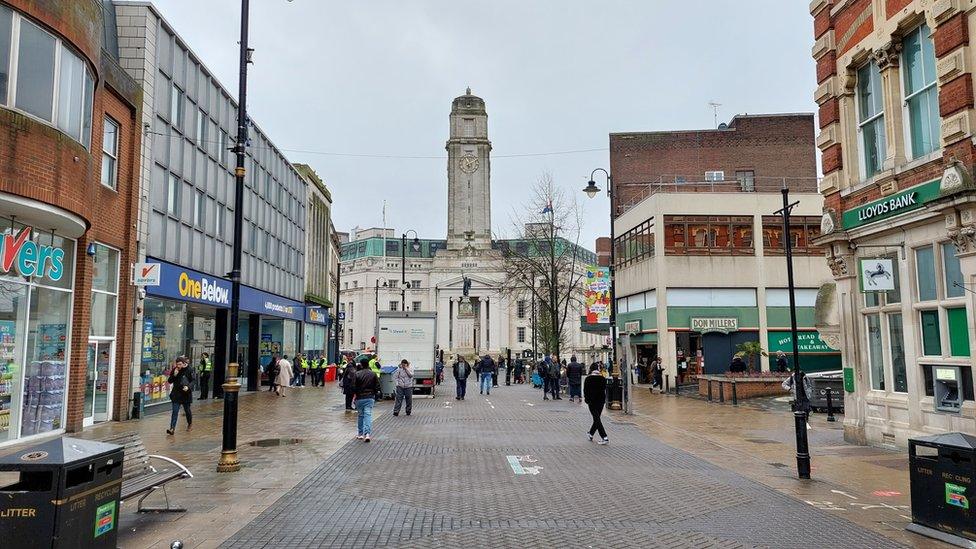Norwich urinal added to national buildings 'at risk register'
- Published

The Gentleman's Urinal, on the edge of Norwich, is a "vivid record of the past", according to Save Britain's Heritage
A urinal, a drying bottle kiln and a marshland mill are among five buildings in Norfolk to be added to the national "at risk" register.
The "Gentleman's Urinal" on St Crispin's Road, Norwich, is the oldest of its type in Britain, according to Save Britain's Heritage.
It is among 70 new entries to the register, run by the independent body.
Its buildings at risk officer Liz Fuller said they held "an important and vivid record of the past".
The register describes the Norwich urinal building as "one of a kind" - an early 20th Century Grade II listed urinal on the edge of Norwich's city centre".
It added that despite restoration, its future was uncertain because of recurring vandalism. It also featured on the city council's at risk register.
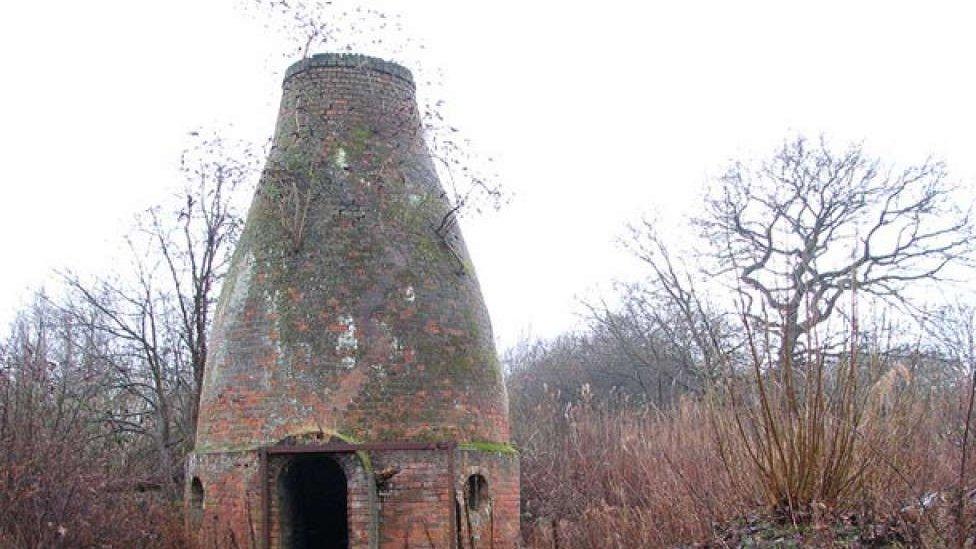
The timber drying bottle kiln, Deal Ground, in Bracondale, Norwich
The timber drying bottle kiln, Deal Ground, in Bracondale, Norwich, has also been added to the list.
The kiln was used to meet J & J Colman Ltd's increasing demand for wooden crates and barrels, the register said, adding: "Perhaps it could again be found a functional use to ensure it is maintained".
Save Britain's Heritage said the new additions brought the total number of empty, historic buildings "at risk of demolition or dereliction" to more than 1,400 across the UK.
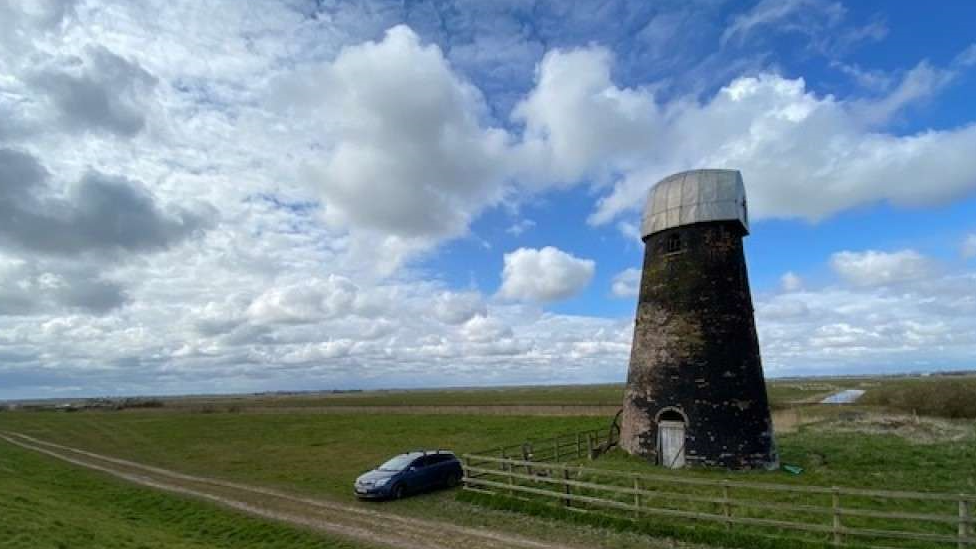
Lockgate Mill on Halvergate Marshes near Great Yarmouth joins the at risk register
Lockgate Mill, at Halvergate Marshes near Great Yarmouth, dates from between 1800 and 1825 an also joins the register.
The last marshman who worked the Grade II listed wind pump left in the 1940s and the mill has deteriorated, the entry said.
A temporary aluminium cap was fitted in 1988, but as of 2023 "the structure is in a poor condition and in need of restoration".
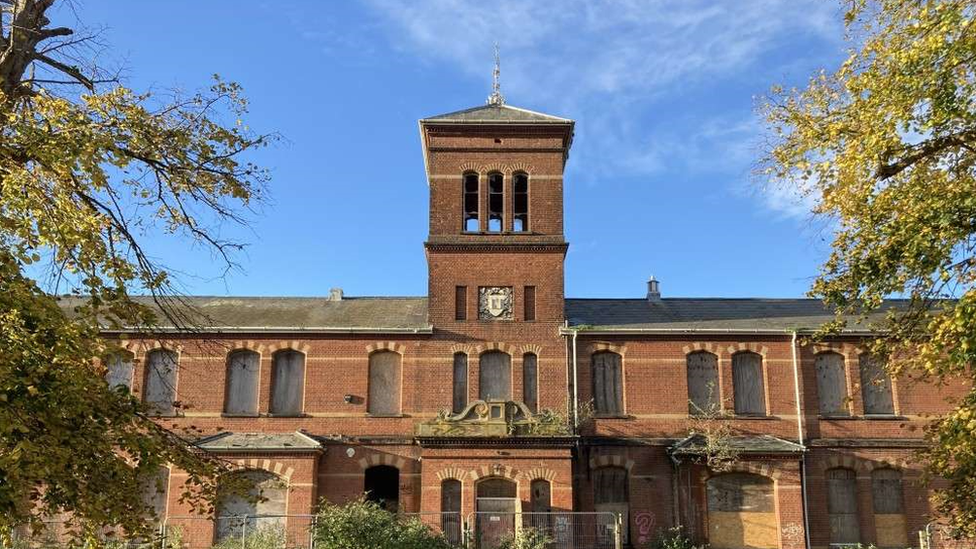
The former asylum building, known as Northside, remains derelict
The "derelict" former St Andrews Asylum in Thorpe St Andrew near Norwich, known as Northside, has also been added to the register.
The only parts of the building that survive are the unlisted clocktower and two ranges on either side, as well as the former mortuary and pavilion.
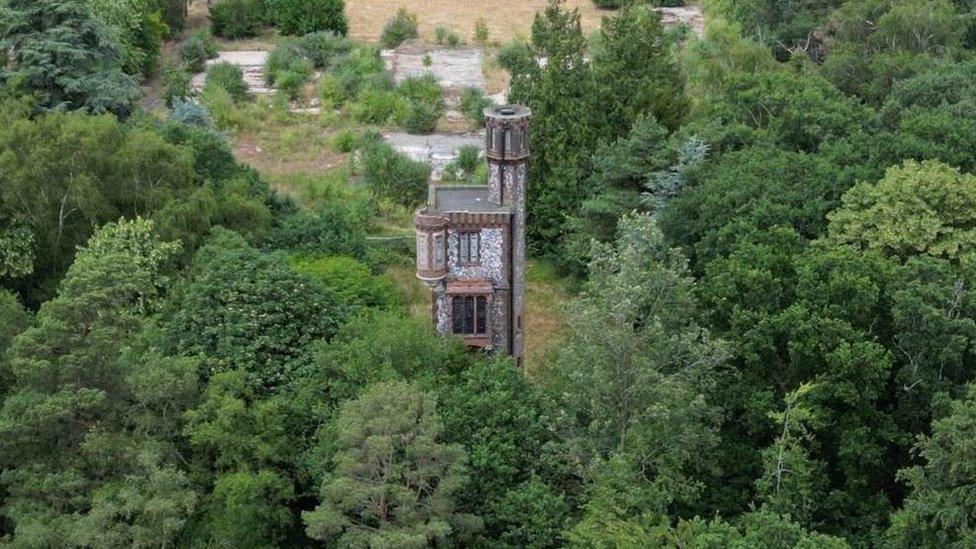
Thorpe Tower overlooks Norwich and is in poor condition, the register said
Also added is Thorpe Tower, which was built in 1880 and overlooks Thorpe St Andrew, which was in "poor condition", the register said.
Liz Fuller said the register "calls attention to these neglected buildings which otherwise can be ignored or remain undiscovered".
"The buildings that we are adding to the Save Britain's Heritage buildings at risk register represent our national heritage in all its different forms," she added.
"If we do not take steps to find new uses for them, they are at risk of being lost, and with them an important and vivid record of the past."

Find BBC News: East of England on Facebook, external and Instagram, external. If you have a story suggestion email eastofenglandnews@bbc.co.uk or get in touch via WhatsApp on 0800 169 1830
- Published7 March 2023
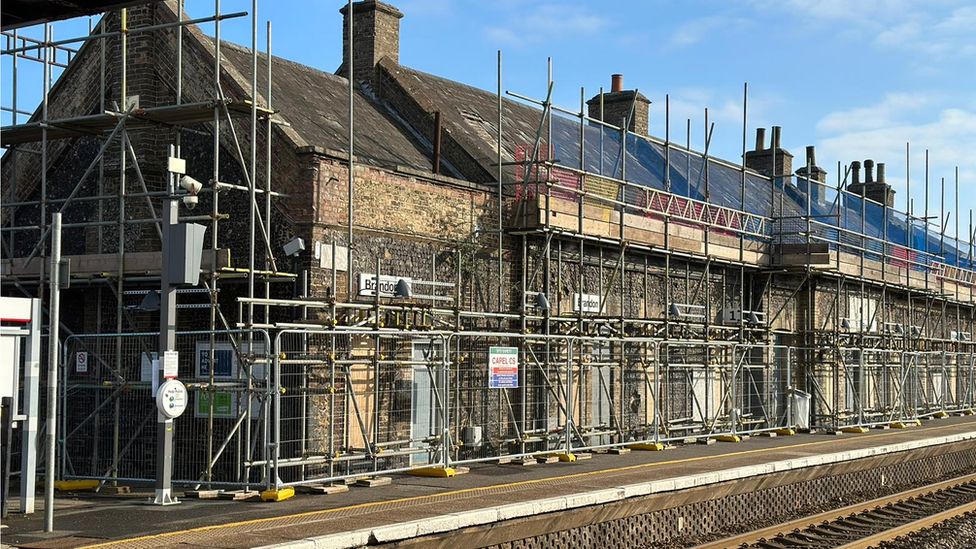
- Published11 November 2022
